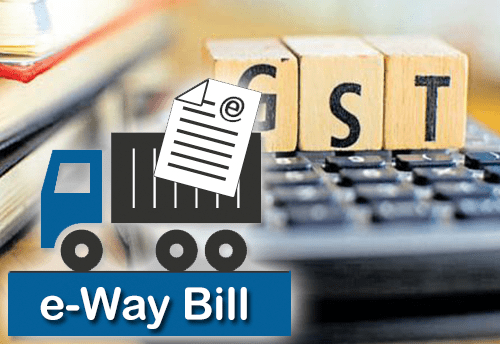GST e-way bill – After Aadhaar authentication for important services, GST e-way bill is another mechanism to check evasion by ensuring goods are tagged and tax paid. The GST e-way bill is launched Nationwide from February 1. This could not be rolled out earlier as software and nationwide system was not ready. The pre registration is required for movement of goods from one state to other if the value of goods is more than ₹ 50,000.
What is GST e-Way bill ?
An e-way bill is an electric-way bill for the movement of goods which can be generated on the GSTN (common portal). The movement of goods will restrict the movement of goods without proper tax paid. After the implementation of this bill, any movement of goods of more than Rs 50,000 in value cannot be made by a registered person without an e-way bill.
The best part is that such bills can be generated or cancel through SMS also. The e-way bills can be generated through online website of EWB i.e. http://ewaybill.nic.in/.
Read : Goods and Service Tax (GST) Calculator
e-way bill contains an unique e-way bill number (EBN) which is allocated and is available to the supplier, recipient, and the transporter. The e-way bill is generated when there is a movement of goods.
- An e-way bill can be generated by both registered and unregistered persons.
- A registered person or transporter can choose to generate and carry e-way bill even of the value of goods is less than Rs 50,000.
- It has to be generated to or from a registered person if the movement of goods is more than Rs 50,000 in value.
Validity of e-Way Bills
| Sr. no. | Distance | Validity Period |
|---|---|---|
| 1 | Less than 100 km | 1 Day |
| 2 | 100 km or more but less than 300 km | 3 Days |
| 3. | 300 km or more but less than 500 km | 5 Days |
| 4. | 500 km or more but less than 1000 km | 10 Days |
| 5. | 1000 km or more | 20 Days |
Who can generate the e-way bills & form to be submitted
Read : Why Banking Sector is Not Happy With GST Implementation ?
| Who | Time | Annexure Part | Form |
|---|---|---|---|
| Registered person in GST | Ahead of Goods Movement | Complete Part A | Form GST INS-1 |
| Registered person is consignee or consignor | Ahead of Goods Movement | Complete Part B | Form GST INS-1 |
| Registered person is consignor or consignee and goods are transferred over to the transporter of goods | Ahead of Goods Movement | Complete Part A & B | Form GST INS-1 |
| Transporter of Goods | Ahead of Goods Movement | Complete Form GST INS-1 if consignor does not | – |
| Recipient is registered to the unregistered person | Recipient Undertakes compliance assuming as supplier | – | – |
